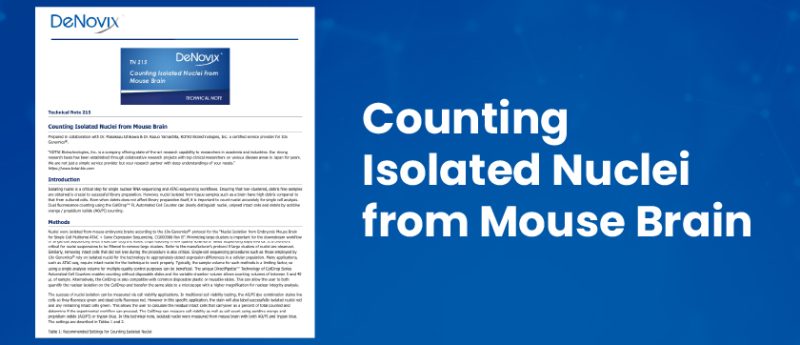Counting Isolated Nuclei from Mouse Brain

Isolating nuclei is a critical step for single nuclear RNA-sequencing and ATAC-sequencing workflows. Ensuring that non-clustered, debris-free samples are obtained is crucial to successful library preparation. However, nuclei isolated from tissue samples such as a brain have high debris compared to that from cultured cells.
Even when debris does not affect library preparation itself, it is important to count nuclei accurately for single-cell analysis. Dual fluorescence counting using the CellDrop™ FL Automated Cell Counter can clearly distinguish nuclei, unlysed intact cells and debris by acridine orange/propidium iodide (AO/PI) counting.
Technical Note highlights:
-
- It describes how the CellDrop Automated Cell Counter uses dual fluorescence to distinguish between isolated nuclei, unlysed cells and debris to provide accurate counts for single nuclear RNA-Sequencing or ATAC-Seq workflows.
- The method will label successfully isolated nuclei red and any remaining intact cells green. This allows the user to calculate the residual intact cells that carryover as a percent of total counted and determine if the experimental workflow can proceed.
-
- Compares nuclei counting data using dual fluorescence with traditional trypan blue staining demonstrating significant improvements in differentiation of nuclei, cells and debris to improve library preparation.
This content was provided by DeNovix.